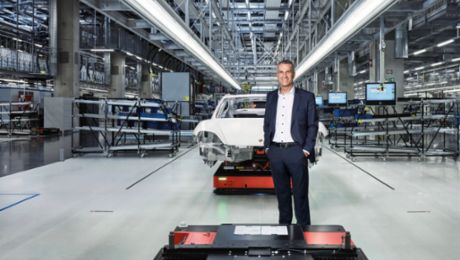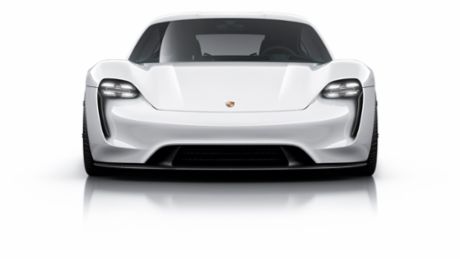Mr. Blume, can an automobile that derives its drive power not from gasoline but from battery cells still be a true Porsche?
(Laughs.) You obviously haven't driven the Taycan—if you had, that question would never have occurred to you.
So you’ve experienced the Taycan?
Many times. Test-drives are essential in the development process in order to make a product perfect.
And your impression?
Phenomenal! Witout a doubt a real Porsche. It drives amazingly in every situation. And it doesn’t yield an inch to the 911. Beyond the acceleration, the driving dynamics are especially impressive. The Taycan brings exhilaration and emotion to e-mobility.
What can the Taycan do that others can’t?
There’s simply nothing comparable in the field of electric sports cars.
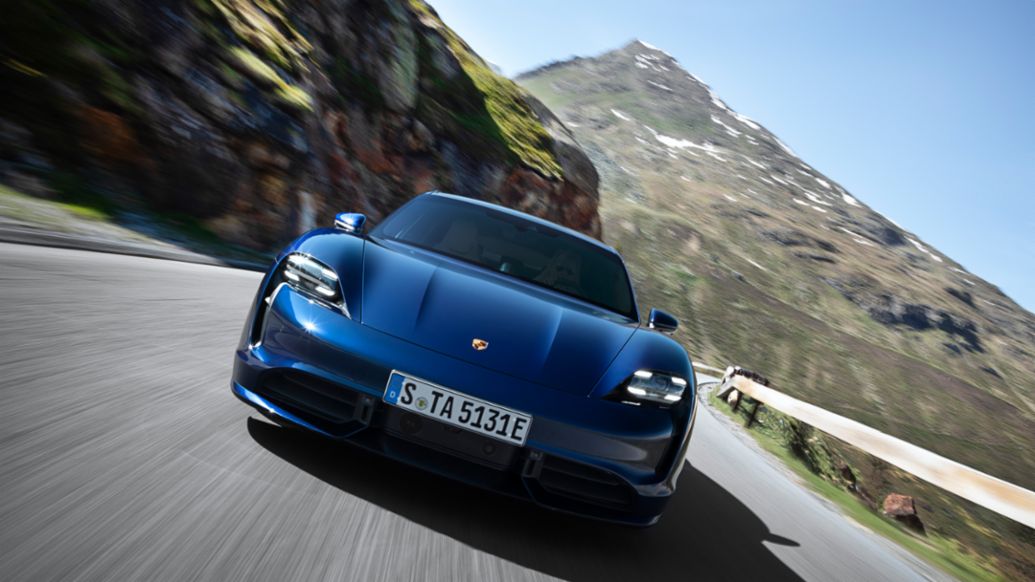
Could you be more specific?
Driving performance on the level of a super sports car. Reproducible acceleration without loss of power. Long-distance capability. State-of-the-art connectivity. Outstanding design—inside and out. And the soul of an athlete, as only Porsche can offer.
And what are the technical innovations that make the difference?
There are many. For example, the Taycan is the first series vehicle with a system voltage of 800 volts rather than the usual 400 volts of electric cars. The total output of the lithium-ion battery is 93 kWh. So it’s by no means just another electric vehicle, let alone a rolling smart device. It’s the Porsche among electric sports cars.
What makes you so certain?
Decades of tradition and experience. The perfect synthesis of motorsports and day-to-day usability. And not least: our role as a driver of innovation in hybrid and electric motors. In 2013 Porsche unveiled the first plug-in hybrid model in the luxury class with the Panamera S E-Hybrid, and with the 918 Spyder, a highly innovative hybrid sports car. Then came the Porsche 919 Hybrid, the fastest research lab and the most complex Porsche race car of all times. We won the title in the World Endurance Championship with it three times on the trot. The 919 Evo, a next-stage development, laid down a sensational lap time of 5:19.55 minutes on the Nordschleife of the Nürburgring.That’s almost incomprehensible. And by the way: Ferdinand Porsche developed the electric wheel-hub motor at the end of the nineteenth century.
And all that is in the Taycan?
It’s the consequence of all that.
Your head of design, Michael Mauer, says that the Taycan is redefining the architecture of purely electrically powered vehicles to some extent.
That’s a fair statement. For him and his team, the objective was to make the Taycan recognizable as a Porsche on first glance, but also to distinguish it from the other models. They succeeded in exceptional fashion. The proportions of the Taycan are both typically Porsche and unique.
Other premium manufacturers are embarking in the e-mobility era with an SUV, Porsche with a sporty sedan. Why?
For three reasons. First, the Porsche brand has traditionally stood for sports cars—that is, for a flat silhouette. And with our first all-electric model, we deliberately want to stick very closely to the brand core— in terms of both driving experience and appearance. Second, a sedan has considerable aerodynamic advantages compared to an SUV. That has a positive impact in terms of range. The Taycan has the best cw-value of any of our current sports cars. And third, the batteries, which are mounted in the underbody, result in a particularly low vehicle center of gravity. It’s actually lower in the Taycan than in the 911. You can feel that in the driving dynamics.
Traditional vehicles are increasingly under pressure, due to both new competitors and policy. Is electromobility more of a risk or an opportunity?
Definitely a mission and an opportunity.
Taking a look at the drive variants of the future that are locally CO2-free, there are only three technologies that come into consideration: e-mobility, hydrogen, and synthetic fuels. Porsche has made its choice.
For good reason. From the well-to-wheel perspective—mobility’s entire chain of effects—a new electric vehicle is roughly three times more efficient than a hydrogen vehicle and six times more efficient than a vehicle powered with synthetic fuels. Even if one includes battery production, the ratio is still one to two over hydrogen and one to three compared with synthetic fuels. And with the advancement of battery development, this advantage will grow even larger. For a sports-car manufacturer like Porsche, those are compelling arguments—quite aside from the outstanding performance figures that can be achieved with an electric drive system.
True climate neutrality will only be achieved, however, when the electricity comes from 100 percent renewable sources.
That’s true.
Big-engined sports cars, heavy SUVs—Porsche, too, comes in for criticism in the climate debate. The argument is that just because a Porsche is electric doesn’t mean it’s sensible.
Let me be clear: we carmakers have a very clear responsibility to lower transport emissions. Those who wish to create long-term value not only must understand the relationship between economic gains and value creation for both people and the environment, but indeed meet the demands of an increasingly environmentally and socially minded society.
Do you know the word “rekkeviddeangst”?
Not really.
“It’s the Porsche among electric sports cars.” Oliver Blume
It comes from Norwegian and means “range anxiety”—the unpleasant feeling that one might run out of power and be stranded. With Ionity, a joint venture of BMW, Daimler, Ford, and the Volkswagen Group with Porsche and Audi, you’ll now be placing some four hundred fast charging parks along important traffic arteries around Europe. Problem solved?
Only when we have ultra-fast, high-performance charging networks will e-mobility become attractive for long-distance travel. We’re making an important contribution to e-mobility’s appeal to the majority of the public. When it comes to offering a comprehensive charging infrastructure, however, we still need more engagement. If the political realm is really serious about environmental protection, it needs to take bold steps right now to clear the way and createa reliable framework for the long term. And not only in Germany, but worldwide. We urgently need a global action plan to provide orientation for everyone.
A magazine wrote: “Perhaps surprisingly, it is Porsche that has taken more dramatic steps toward e-mobility than any other German carmaker.” Proud?
Surely you don’t expect me to object.
Proud?
Validated. We have a clear, resolute strategy and are forging ahead with verve. The Taycan is our opening salvo in an e-mobility offen- sive. We’re currently proceeding apace with the biggest restruc- turing in our company’s history—with our model ranges, in the plants, in our minds.
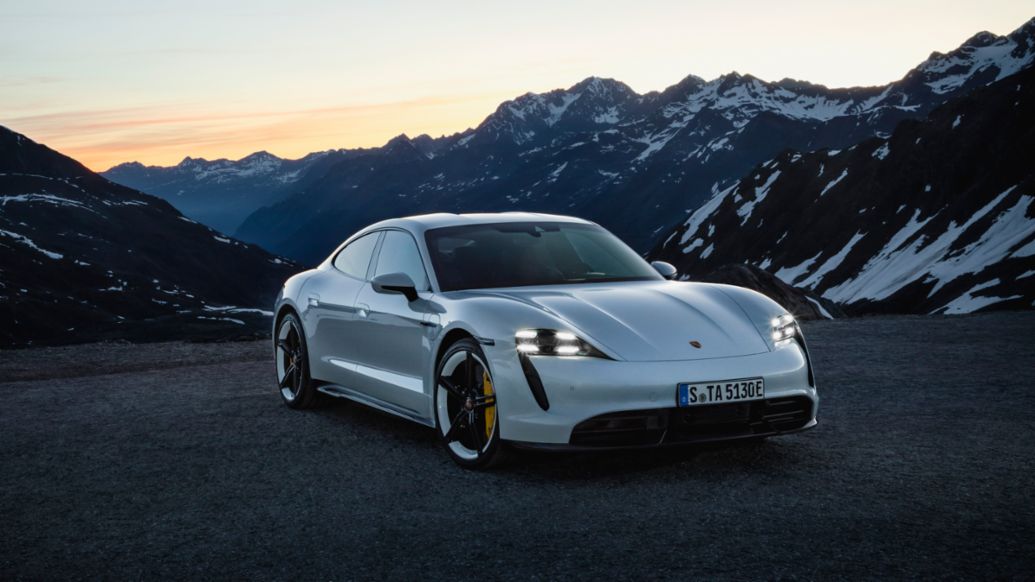
What does that mean, exactly?
By 2022 we will have invested some € 6 billion in e-mobility. That’s a considerable sum for a company of our size. Thanks to the Taycan and the Cross Turismo, some 1,500 new jobs have been created in Zuffenhausen. We’re also producing our electric sports car completely CO2-neutrally.
Porsche also stepped away from diesel...
...so that we can concentrate on our core competencies.
Which are?
In terms of drive technology, we’re focusing on a triad of optimized gasoline engines, emotional plug-in hybrids, and pure electric sports cars. That’s the right strategic answer to the regime change in our industry over the next ten years or so. That puts us in a very good position and enables us to adjust flexibly to the different speeds at which various market regions worldwide are developing e-mobility.
What role does the hybrid drive play in this triad?
A very important one—particularly with regard to the transition to e-mobility. We were the first manufacturer to offer modern plug-in hybrid drives in three premium segments simultaneously. With the Panamera, for example, the most powerful top model is actually a hybrid. Our customers are delighted: since the market launch, around 60 percent of all Panamera models sold in Europe have been hybrid drive models, and in some countries the rate is even higher. In 2020 we predict that every second Porsche will have an electric drive.
“There’s simply nothing comparable in the field of electric sports cars.” Oliver Blume
And after that?
Electric vehicles will dominate. Combustion engines will still exist—in some regions there will be a lot for a very long time. But in the long run, electric drive systems will gradually displace combustion engines.
The automotive industry is currently changing faster than ever before. In the next five years, there will be more changes than in the previous fifty.
That’s why we’re in the process of fundamentally changing our business model: from that of a traditional automobile manufacturer to a modern, highly innovative mobility provider.
The proportion of software in a vehicle is rising dramatically. For many, the vehicle of the future is essentially a smartphone on wheels. Is that overblown?
At a minimum, software represents an increasingly large part of the value chain. It plays a significant role in determining the performance and characteristics of a vehicle. We have to make that one of our core competencies.
Where do you get your software? One often hears that Europe lacks an IT industry of sufficient scope to support this transformation process.
Within the totality of the Volkswagen Group there are currently about five thousand experts working in some capacity on the development of IT for vehicles. Not only our type of work but also the composition of our workforce and the workflows in our operations are changing massively in the course of digitalization. The particular challenge for Porsche consists of establishing a new digital culture and integrating it with our tradition, which in turn is a part of our brand identity. It’ll be crucial to our continued success as a company to ensure that we can clear the obstacles and enable agile organizational structures and processes across all departments and divisions.
And when you hit a roadblock internally?
Then we’ll go where the talent is. We believe in the opportunities presented by collaboration with digital developers, start-ups, and innovation centers around the world. So we’re concen- trating our forces and enabling joint work models by creating open platforms and interfaces. We benefit from this innovative drive while at the same time contributing our part to the establishment of a digital ecosystem. Porsche is opening up in order to get others involved, work together with them, and learn from each other—be it with individuals, start-ups, or other companies.
More than twenty thousand people all around the world have already signed up to buy a Taycan without ever having laid eyes on the car.
It’s astonishing, isn’t it? That’s why I’m all the more convinced: the more attractive our products are, the faster e-mobility will gain acceptance.
But Porsche customers will continue to have options.
That’s right. Everyone will be able to get what they want from our brand.
What does that mean for the individual model ranges?
There are four dimensions: the first is our successful “base.” Here we’re looking at which variants are appropriate for which segments. The Cayenne Coupé is an example of this. “Image” stands for sporty cars that carry the racing gene, such as our GT and RS models. In the “lifestyle” dimension, we combine modern vehicles with popular elements from previous generations. This is represented, for example, by the 911 Speedster. The “future” dimension encompasses our plug-in hybrid models and all-electric cars like the Taycan with a high degree of digitalization.
Demand for the Taycan is great. Would there be a possibility of opting for preconfigured models?
We won’t be building any stock vehicles in the future either. Everyone will get exactly the Taycan that they desire.
Info
Interview from the Porsche customer magazine Christophorus, No. 392
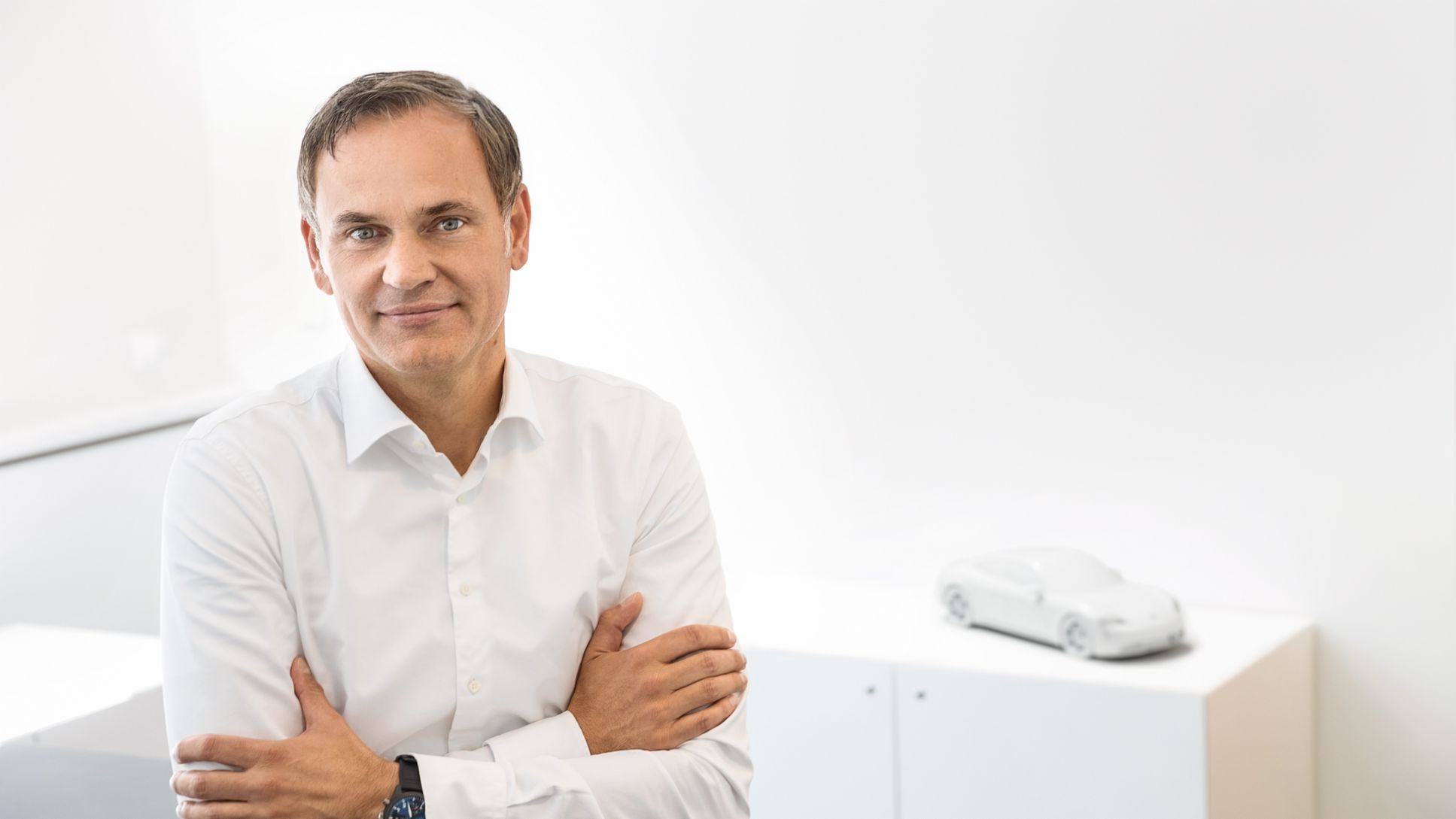
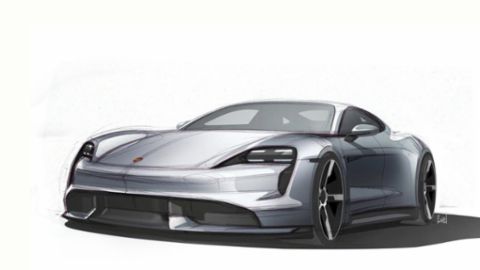
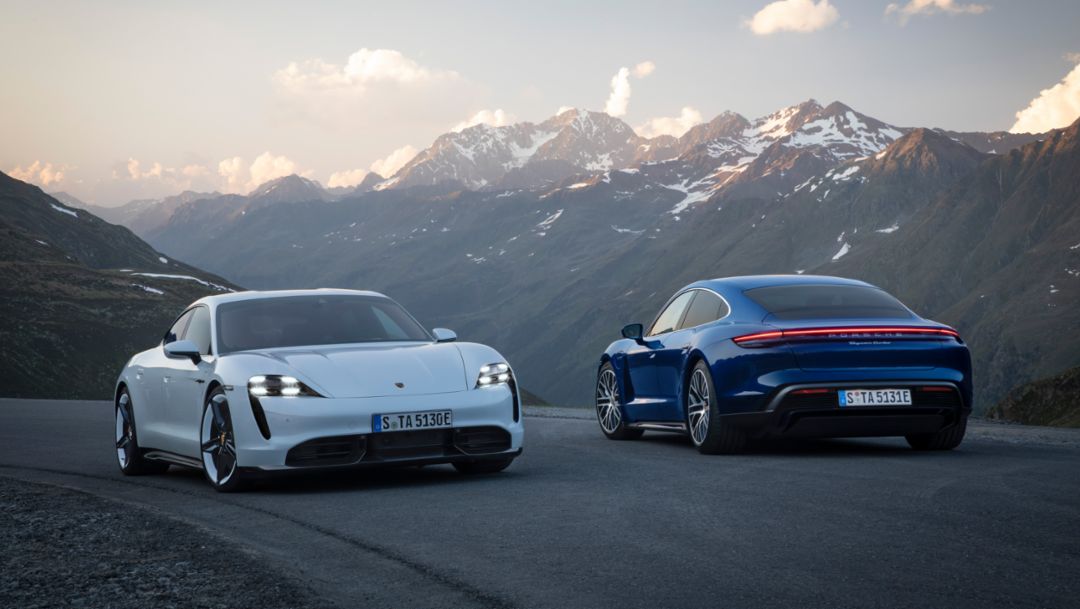
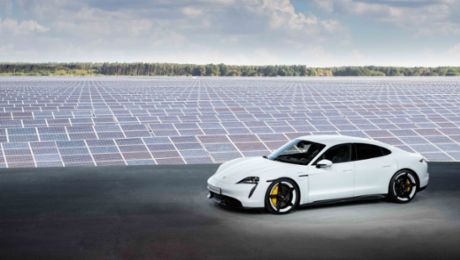
.jpg/jcr:content/The%20Porsche%20Taycan%20will%20have%20the%20first-ever%20full%20integration%20of%20Apple%20Music%20in%20any%20vehicle%20(Image%20Courtesy%20of%20!K7%20Music).jpg)
